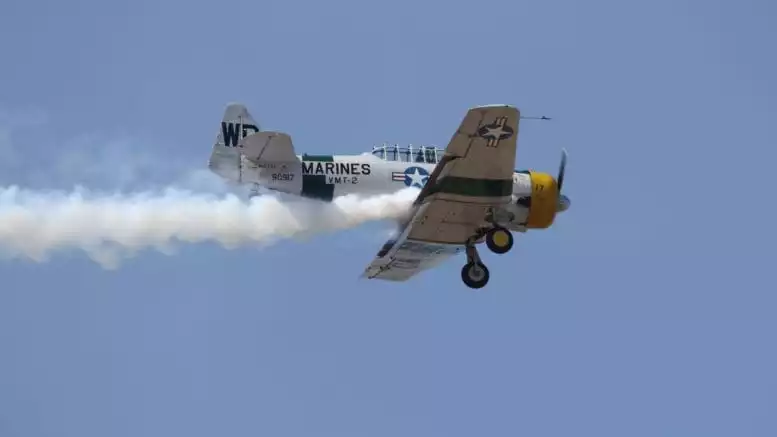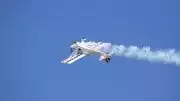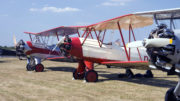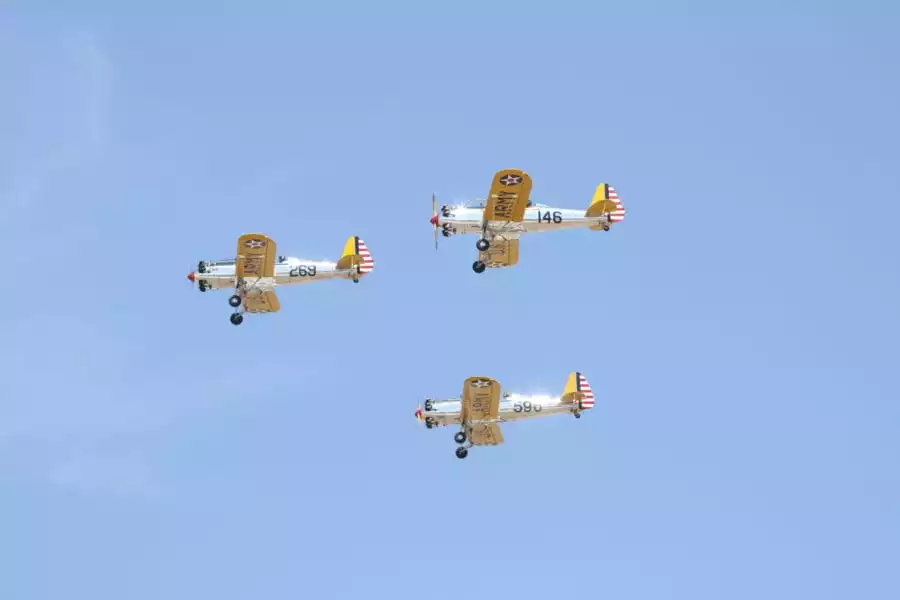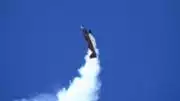Four Types of Aircraft Engines and How They Affect Flying
How an airplane can fly in the air depends on the types of aircraft engines used. Here’s how the engine affects aerobatic flying.
When the Smithsonian Air and Space Museum expanded with the Udvar-Hazy Center in 2003, historians, docents, and visitors alike were thrilled to see an entire section dedicated solely to different types of aircraft engines. The increased space from the cramped original building on the Washington DC Mall meant that guests were able to not only see many more airplanes which were important to aviation history, but also a look at how they were powered.
Aircraft engine design was the final obstacle to first achieving powered flight. Aviation pioneers struggled to find an engine which was powerful enough to lift itself, as well as an airframe, controls, and at least one pilot off the ground. Once Orville and Wilbur Wright managed the feat in 1903, further development was often pushed along by the necessity of war and military planes. Jet engines allowed airplanes to break the sound barrier and paved the way for modern travel. Here are few major types of aircraft engines and the ways in which the affect aerobatic life in the air.
The First Aircraft Engine
Since the Wright Brothers were not only the fathers of powered flight, but also among the first aerobatic pilots, attention should be paid to the engine they chose to place inside their 1903 Wright Flyer. Although it’s difficult to imagine now, part of the puzzle of achieving flight was deciding how the airframe should be powered. Most of the Wright Brothers’ contemporaries relied on steam power or compressed gas. One of their closest competitors, Samuel Langley, tried a gas powered engine. However, the decision to use internal combustion engine on the Wright Flyer was prescient. This was the answer to the puzzle; since then, some form of this engine was used on just about every airplane design. Modern aircraft which do not have jet engines have the same basic type as the Wright engine structure. However, today, they are now much more complicated.
Despite widespread searching, the Wright brothers were unable to find an engine which fulfilled their specifications. They were seeking 8 to 10 horsepower and a weight under two hundred pounds. (As a matter of perspective, bear in mind that most basic consumer lawnmowers offer approximately 6 hp.) Although some car manufactures had the capability of producing engines like these, they refused to do so unless in bulk. The Wrights only needed one.
Although the brothers were skilled engineers and inventors who also managed to crack the code of controlling aerodynamic forces, they required assistance where the engine was concerned. A self-taught mechanic and machinist who was helping the Wrights with their bicycle business, Charlie Taylor, built a 12 hp engine in about six weeks.
Unfortunately, the original engine was damaged when the brothers were conducting further flights in December of 1903. Parts of it were salvaged to build another engine for a second airplane in 1904. Design specifications have not survived, but fragments do. Since many of the subsequent Wright Flyer engines were similar, aviation historians have a good idea of what the 1903 engine was like.
Taylor’s engine was cooled by water. A radiator feed hose was at the bottom, and two return hoses rested at the top. A flywheel helped to quell the engine’s vibrations, and a magneto produced electricity for the engine’s ignition system. Four combustion chambers ignited a mixture of fuel and air. Intake valve springs, exhaust valve springs, an air intake, a carburetor, fuel line, timing chain, lubrication system, timing cams, and cam shafts provided enough power to lift the Flyer, and the completed assembly is similar to an automobile’s. Through the rest of their career, the Wrights continued to refine and improve on both the engine as well as the airframe design.
Four and Six Cylinder Reciprocating Engines
Aerobatic airplane designers and engineers face the challenge of providing enough power for the aircraft while also keeping it light and nimble enough for maneuvers. Many modern aerobatic airplanes feature four or six cylinder engines. Metal cylinders are where the engine’s combustion occurs. Within the cylinder, the engine’s piston moves to open and close the air intakes which control the engine’s combustion.
A six cylinder airplane engine is more expensive, but provides greater power. Pilots who prefer more power usually fly airplanes with six cylinders. These do weigh more, but the weight does not affect maneuverability much. However, six cylinder engines tend to cost more upfront. In addition, they require more fuel, higher operating costs, and more expensive maintenance. The Lycoming company in Pennsylvania is a popular choice for aerobatic pilots when it comes to choosing which types of aircraft engines to use in an airplane.
Radial Engines
Some aerobatic airplanes have radial engines. These are also reciprocating and run on internal combustion. The cylinders, however, are arranged in a circle. Many aircraft engines boasted radial engines until gas turbine engines rose in popularity. A Russian company, Vendeneyev, produces radial engines for Yakovlev and Sukhoi airplanes, which are heavily used in aerobatic flying.
These types of aircraft engines offer a more protective design than straight-line engines. Damage from bullets or shrapnel can cause more damage in the kind of engine the Wright Flyers used; liquid cooled engines can quickly lose coolant. An air-cooled radial engine, however, is more robust when damaged. Some aerobatic pilots prefer a radial engine due to its reliability, versatility, robustness, ease in maintenance, and lower cost.
Jet Engines
The development of the jet engine advanced aviation, not just aerobatics, more than just about any other advance in the field. Jets made tremendous, supersonic speed possible and forever changed aerial combat. Liquid fuel propulsion produces tremendous thrust. In a striking contrast to the power generated by the 1903 Wright Flyer, the jet-powered Concorde could cross the Atlantic Ocean in about three hours.
Where aerobatics is concerned, the thrust vectoring of jet engines enabled maneuvers which are largely impossible with more traditionally powered aircraft. This enables quick turns, tight maneuvers, and high angles of attack. For example, the Pratt & Whitney F119 turbofans on the F-22A, allows the pilot to direct thrust up to 24 degrees. This also permits impressive displays at low speeds.
Ready to Soar with Us?

